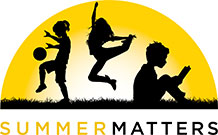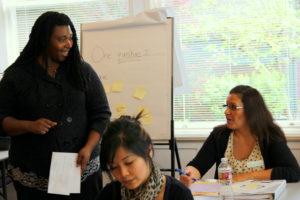Facilitate a Reflection and Planning Session
Once all stakeholder feedback, youth outcomes data and quality assessment data is collected and analyzed, give key program stakeholders a chance to respond to it and use it to plan for next summer. In the spirit of a continuous quality improvement cycle, a program’s end-of-summer reflections should feed directly into the development of the Quality Improvement Plan for the next year. The main difference at this juncture is that if you’ve completed the cycle once (PLAN, TRAIN, ASSESS AND REFLECT) with your program, you presumably have a great deal more information to use when planning for the second year, beyond the content of the Phased Comprehensive Assessment of Summer Programs (P-CASP) self-assessment in the PLAN chapter of the Summer Starts in September Planning Guide. This planning session can include a combination of individual, group, remote and in-person review of data.
Once all stakeholder feedback, youth outcomes data and quality assessment data is collected and analyzed, give key program stakeholders a chance to respond to it and use it to plan for next summer. In the spirit of a continuous quality improvement cycle, a program’s end-of-summer reflections should feed directly into the development of the Quality Improvement Plan for the next year. The main difference at this juncture is that if you’ve completed the cycle once (PLAN, TRAIN, ASSESS AND REFLECT) with your program, you presumably have a great deal more information to use when planning for the second year, beyond the content of the Phased Comprehensive Assessment of Summer Programs (P-CASP) self-assessment in the PLAN chapter of the Summer Starts in September Planning Guide. This planning session can include a combination of individual, group, remote and in-person review of data.
Tips for planning and facilitating your meeting:
1. Identify who should participate in the meeting. Which stakeholder groups? Which staff members?
1. Identify who should participate in the meeting. Which stakeholder groups? Which staff members?
2.Narrow the data into manageable parts prior to the planning session. By this point, stakeholdersshould be reviewing, at a maximum:
– a short quality assessment report; (more in the ASSESS online companion guide)
– a top level summary of stakeholder feedback from surveys and any large or small group debriefs; and
– a youth outcomes brief
Too much data will overwhelm participants and could derail the important task of prioritizing improvements for next summer.
– a short quality assessment report; (more in the ASSESS online companion guide)
– a top level summary of stakeholder feedback from surveys and any large or small group debriefs; and
– a youth outcomes brief
Too much data will overwhelm participants and could derail the important task of prioritizing improvements for next summer.
3.Put data into charts or graphics as much as possible. Consider using Prezi (prezi.com) or PowerPoint to make an interesting presentation of all the data collected and to highlight any themes or key findings.
4. Plan with the end in mind. If a revised or new Quality Improvement Plan is the desired product at the end of the planning session, ensure your agenda is focused enough to help program stakeholders zero in on two or more quality improvement goals by the end of the session. To do so, pre-select themes or
major categories for planning discussions and prepare and practice methods for building group consensus.
Focus on recording: create a visual record of key points of agreement and disagreement during a dialogue. Ensure that discussion and decisions are accurately captured to aid in the consensus-making process. If your program has operating principles or values, use those as a reminder for how to proceed in what may at times be heated conversation.
major categories for planning discussions and prepare and practice methods for building group consensus.
Focus on recording: create a visual record of key points of agreement and disagreement during a dialogue. Ensure that discussion and decisions are accurately captured to aid in the consensus-making process. If your program has operating principles or values, use those as a reminder for how to proceed in what may at times be heated conversation.
5. Engage participants in the presentation and facilitation.
Use a jigsaw technique: Assign small groups of participants to become experts on different sections of the reflection data (quality assessment, youth outcomes, stakeholder feedback) and then ask a designated reporter or reporters from each group to bring the rest of the large group up to speed on the findings.
Use a jigsaw technique: Assign small groups of participants to become experts on different sections of the reflection data (quality assessment, youth outcomes, stakeholder feedback) and then ask a designated reporter or reporters from each group to bring the rest of the large group up to speed on the findings.
6. Make it fun! Infuse summer program culture into the session to keep things lively. Ensure the meeting is grounded in the youth work that is at the core of the program’s mission!




